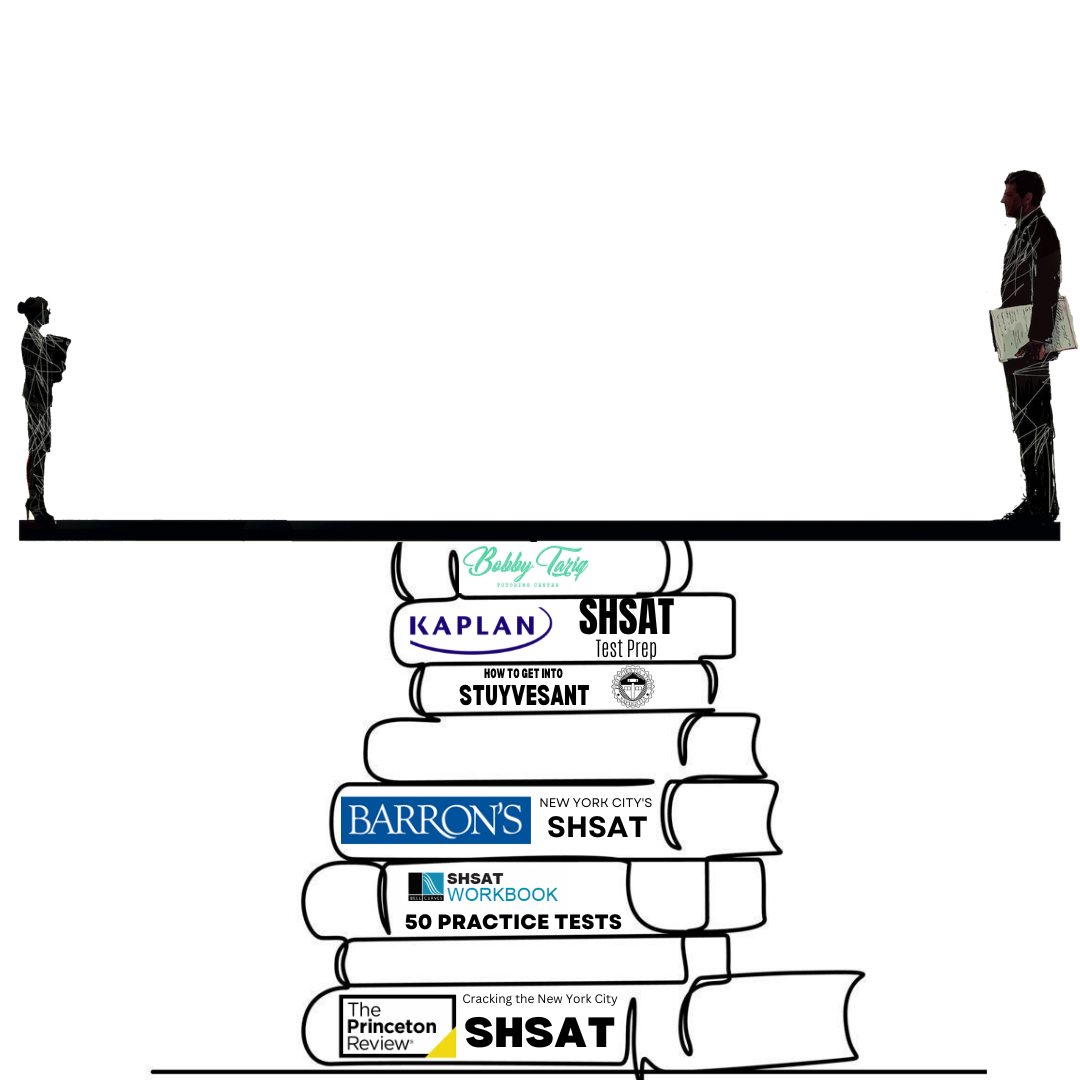For admittance into the specialized high schools of New York City, students must take the Specialized High School Admissions Test, or SHSAT. Children can prepare for years to take this exam that determines which of the eight schools they get to attend, if any. However, this system is flawed — it is considered to be “well known” that girls are admitted to SHSAT schools at a much lower rate than boys.
Across America, girls perform at a higher rate than boys in grades, diplomas, degrees, and college applications. However, this is not the case for applications to New York City’s specialized high schools. The percentage of seats that boys receive in SHSAT schools stays steady around sixty percent, but for some schools, like the High School for Math, Science and Engineering – HSMSE – the percentage hovers around sixty five percent male.
Decades of data show that throughout high school, girls’ GPA distribution shifted from “B” grades to “A” level, while boys consistently remained at a GPA distribution of “B” grades. Considering the fact that girls tend to receive higher grades in high school, it is an anomaly that girls receive a lower rate of admittance into specialized high schools than boys. If anything, one would expect that girls would be accepted at a higher rate than their male counterparts.
There does not appear to be a logical reason for why girls are underrepresented in the eight SHSAT schools in New York City. In fact, across other screened and high performing schools in the city, girls make up a higher percentage than boys. A 2013 data collection done by The New York Times found that girls were consistently overrepresented at Bard High School Early College, Millennium High School, Beacon High School, Edward R. Murrow High School, and Townsend Harris High School. This was the same year that boys composed over sixty seven percent of HSMSE.
It should be concerning that schools are not representative of the region they occupy. New York has a ratio of ninety four men to every hundred women. Another concern raised by the gender disparity is that underrepresentation of girls in STEM focused schools leads to a lack of opportunities for the same girls to do well in a STEM field. If professional fields are only picking from the best male options because they lack the option of having a better fitted, female person in that field, it will not only affect individual girls from succeeding in the career that they want to pursue, but STEM will suffer because they will not have the most advanced people leading their fields.
Academics among the STEM field in particular see this as a serious problem. The SHSAT schools have produced many Nobel Laureates, with four coming just from Stuyvesant High School. Their names are Joshua Lederberg, Robert Fogel, Roald Hoffman, and Richard Axel. They are all white males. Stuyvesant, which many consider the best out of the eight specialized high schools, has not had a single female Nobel Laureate. Janet S. Hyde, a psychology professor at the University of Wisconsin, addressed the significant concerns: “It is very suspect that you don’t have as many girls as boys in New York City’s specialized schools … it is also bad for society as a whole because in a global economy we need to identify the best scientists and mathematicians”. As many experts have highlighted, the reason for gender inequalities at the SHSAT schools is not that boys are more intelligent than their female counterparts and perform high on the SHSAT.
There are some programs that the city of New York has created to remedy similar problems. The Discovery Program offers one in five SHSAT seats to select low-income students who scored below the cutoff to get into their specialized school of choice. In the program, the students attend a summer course before school starts. However, the program is just in place to bridge economic inequalities, not gender disparities. And even more so, the program “did not make much of a difference” to those that were economically disadvantaged, as the seats went to the same people that they did before.
A new program, DREAM 2023, has been funded to prepare seventh graders for the SHSAT when they take it the next academic year. However, it is doubtful that it will do anything to affect gender inequalities. Data shows that girls perform higher on exams, so with this reasoning in mind, girls perform better on the SHSAT, so increased test preparation would truly help male seventh graders more than their female counterparts.
The student population being majorly male is an issue that is spread over all eight of the SHSAT schools. An optimistic solution would be to increase girls’ awareness of the SHSAT, but statistics show that even that would not be helpful. Data from 2018 about 2017 testing shows that fifty one percent of applicants were female, but females only composed forty four percent of students admitted. Despite the lack of a clear solution, by bringing more awareness to the issue, the DOE may put more effort into finding solutions to reform this broken system. Given their track record with such programs, it may not do much, but it would be a start for the organization to admit that there is such an issue. Coming back from the pandemic, and with changes already enacted in the admission process to public middle and high schools, like the use of lottery for middle, the DOE should focus more attention on specialized schools, and in the process increase the amount of girls in specialized high schools.

